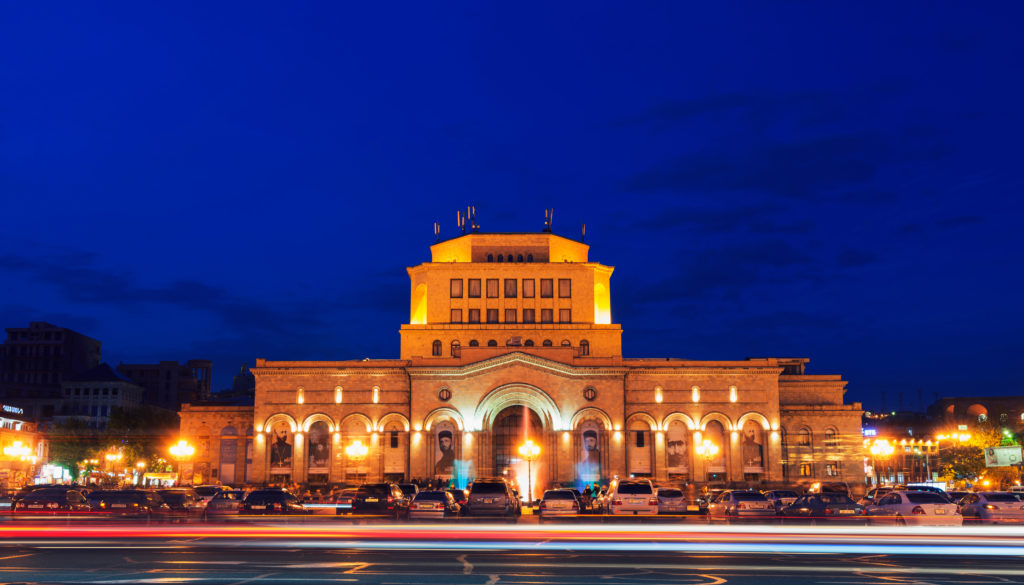YEREVAN
Armenia’s economy has expanded by 2.7 percent in the third quarter of this year, backed by a rise in prices for commodities on world markets, growth in agriculture and robust tax collections figures.
Gross domestic product (GDP) grew by 25.2 percent in July-September compared to the second quarter of this year.
The country’s economic activity grew by 4.3 percent in the first 10 months of 2021 compared to the same period last year, supported by the growth in almost all sectors of the economy.
The economic activity index in October 2021 was up 3.6 percent year-on-year, but 4.9 percent down compared to September this year. Growth was recorded in all sectors, except for electricity consumption.
GDP shrank 3.3 percent year-on-year in the first quarter of 2021 as the impact of the coronavirus pandemic and war over Nagorno-Karabakh dampened prospects of recovery. Though Armenia has reported rapid growth in recent years, its economy suffered the double blow of restrictions aimed at containing the COVID-19 pandemic and last year’s six-week resumption of the conflict between Azerbaijan and ethnic Armenian forces over the Nagorno-Karabakh region and surrounding territories.
The ex-Soviet country’s economy returned to growth in the second quarter of this year, backed by a rise in prices for commodities on world markets, growth in agriculture and robust tax collection figures. GDP grew by 13.1 percent year-on-year in April-June and by 17.4 percent compared to the first quarter of this year.
That led to the revision of the economic growth forecast by the government to almost twice the rate it had previously predicted – to 6 percent from 3.2 percent. The central bank revised its own economic growth projection for 2021 upwards to 5.4 percent in 2021 from a previous projection of 4.6 percent, backed by rapid growth in the service sector and agriculture.
In January-October this year, industrial output was up by 1.1 percent year-on-year to about 1.9 trillion drams, construction – by 5.9 percent to 305.7 billion drams, services (excluding trade) – by 6.4 percent to over 1.5 trillion drams.
The World Bank projects Armenia’s growth at 6.1 percent in 2021 and 4.8 percent next year. The International Monetary Fund (IMF) said in its latest World Economic Outlook report in October that it expected Armenia’s economy to grow 6.5 percent in 2021 and 4.5 percent in 2022.
In May, Fitch Ratings affirmed Armenia’s long-term foreign-currency issuer default rating (IDR) at ‘B+’ with a stable outlook.
Fitch Ratings said in July that Armenia’s economy would experience a moderate recovery this year and next as the country returned to growth after the COVID-19 pandemic and a flash war with Azerbaijan.
GDP will expand 3.2 percent in 2021 and 4.0 percent in 2022, the rating agency said, adding that while economic activity was returning, some industries, such as banking, still continued to be affected by the recent downturn.
Fitch said that Armenia also had a robust macroeconomic and fiscal policy framework, and a credible commitment to reform, both of which were underpinned by the IMF standby arrangement.
S&P Global Ratings assigned its ‘B+’ long-term foreign- and local-currency sovereign credit ratings to Armenia and ‘B’ short-term foreign- and local currency ratings. The outlook is positive.
The agency has also assigned its ‘BB-‘ transfer and convertibility assessment to Armenia.
S&P said that the Armenian economy was recovering and that it expected the country’s GDP to exceed 2019 levels by next year and for growth to settle at close to 4 percent a year over the medium term.

